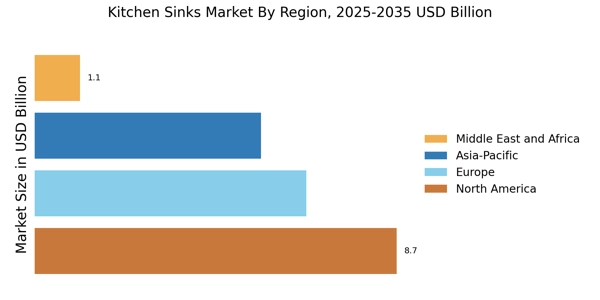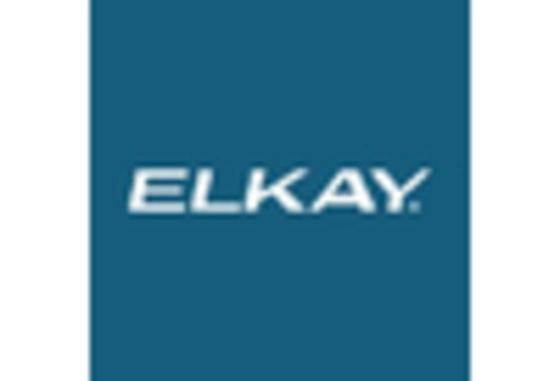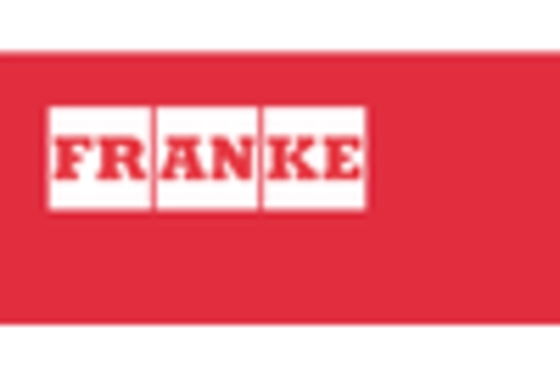Growth of the Home Renovation Market
The ongoing expansion of the home renovation market is significantly impacting the Kitchen Sinks Market. As homeowners invest in upgrading their kitchens, the demand for high-quality, aesthetically pleasing sinks is on the rise. Recent statistics suggest that the home improvement sector is projected to grow by approximately 10% annually, with kitchen renovations being a primary focus. This trend is driven by the desire for modern, functional spaces that enhance both utility and visual appeal. Consequently, the Kitchen Sinks Market is poised to benefit from this renovation boom, as consumers seek to replace outdated fixtures with contemporary designs that reflect their personal style.
Consumer Preference for Customization
The rising consumer preference for customization is shaping the Kitchen Sinks Market. As individuals seek to create unique and personalized kitchen spaces, the demand for customizable sink options is increasing. This trend is evident in the growing popularity of bespoke designs, materials, and finishes that allow homeowners to tailor their kitchen sinks to their specific needs and aesthetic preferences. Industry expert's indicates that the customization segment is anticipated to grow by approximately 30% in the next few years. This shift towards personalized products not only enhances consumer satisfaction but also encourages manufacturers to diversify their offerings, thereby fostering innovation within the Kitchen Sinks Market.
Rising Demand for Eco-Friendly Products
The increasing consumer awareness regarding environmental sustainability appears to be a driving force in the Kitchen Sinks Market. As more individuals seek to reduce their carbon footprint, manufacturers are responding by offering sinks made from recycled materials and sustainable resources. This trend is reflected in the growing market share of eco-friendly kitchen sinks, which is projected to reach approximately 25% by 2026. The shift towards greener products not only caters to consumer preferences but also aligns with regulatory pressures aimed at reducing waste and promoting sustainability. Consequently, the Kitchen Sinks Market is likely to witness a surge in demand for products that emphasize environmental responsibility, thereby influencing purchasing decisions.
Technological Advancements in Kitchen Design
Technological innovations in kitchen design are reshaping the Kitchen Sinks Market. The integration of smart technology into kitchen fixtures, including sinks, is becoming increasingly prevalent. Features such as touchless faucets, built-in water filtration systems, and smart sensors are appealing to tech-savvy consumers. This trend is supported by data indicating that the smart kitchen segment is expected to grow at a compound annual growth rate of over 20% in the coming years. As homeowners prioritize convenience and efficiency, the demand for technologically advanced kitchen sinks is likely to rise, prompting manufacturers to innovate and adapt their product offerings accordingly.
Increasing Urbanization and Population Growth
The trend of urbanization and population growth is exerting pressure on the Kitchen Sinks Market. As more individuals move to urban areas, the demand for residential properties, including apartments and condos, is escalating. This demographic shift often leads to smaller living spaces, which in turn influences the design and functionality of kitchen sinks. Compact and multifunctional sinks are becoming increasingly popular among urban dwellers who prioritize space efficiency. Market analysis indicates that urban areas are expected to see a 15% increase in housing demand over the next five years, thereby driving the need for innovative kitchen sink solutions that cater to this evolving lifestyle.


















Leave a Comment